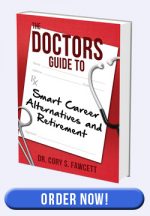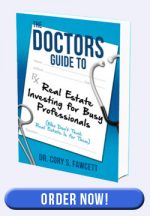Retirement account required minimum distributions (RMDs) can be a tax burden for those in their retirement years. But thanks to the Coronavirus Aid, Relief, and Economic Security (CARES) Act of 2020, we can declare our independence from the RMDs for 2020 and save a ton of money.
RMDs are in place to be sure the government gets their tax revenue from the money that has been saved tax free for retirement. Initially, when a deposit is made into a qualified retirement plan, the money is usually invested before taxes are withdrawn. Therefore, the deposited amount did not generate income for the government. The money then grows tax free for many years. So, when does the government get their tax money? Only when money is taken out of the account to spend will it be taxed. If you don’t need the money and never take it out, they would not get their tax revenue until you die. Then depending on what you do with your retirement funds at that point, they could still miss out on receiving their portion of the money saved for retirement. Thus the RMDs come into play.
By requiring us to take a distribution from our retirement fund after age 70 ½ (changed to age 72 in 2020) the IRS can begin collecting taxes on that money. This forces those who are 72 or older to take the money out of their account whether they need it or not. A big problem may occur for those who are unprepared for this withdrawal.
If you know you are taking these RMDs, then you should have a portion of your retirement account in interest bearing vehicles like CDs or Bonds. When I started using the rule 72(t) to take money out of my IRA before age 59 1/2, you can learn how I did that here, I knew I would have to take out five payments in the next five years. I sold the amount of stock I would need for these payments while the market was up and invested the money in certificates of deposit. Then I would not be forced to sell any stock in a down market to make a distribution. But if the RMDs require you to sell stock to make the distribution, and the stock market is down at the time, you get a double penalty, taxes and market losses.
The CARES act gave us a reprieve from the government imposed RMDs this year. When the government imposed a shutdown of the economy to mitigate the effects of the pandemic, it caused a predictable drop in the stock market. If businesses can’t make money, their stock will go down in value. If the market was forced into a decline and retired people were forced to sell at a loss to meet their annual RMDs, then they could potentially take a huge hit.
Let’s look at an example of a person who realizes he is investing for the long haul and keeps his retirement plan invested in 100% stocks because at age 72 he expects to live another 20+ years. If he has a portfolio of $2,000,000, a stock market drop of 25% would mean the portfolio is now worth $1,500,000.
His RMD at age 72 is based on a life expectancy of 25.6 years, so he is required to take approximately 3.9% RMD. But he must calculate that figure based on what the value of his account was on the last day of the previous year. So even though the current value of the account is $1,500,000, he must take the distribution as if the account was still worth $2,000,000.
That would make this year’s distribution $78,125 which is now approximately 5.2% of the $1,500,000 current value. This distribution is similar to what would be required if the person was 80 years old.
Taking a larger distribution than normal, at a time when the account balance was artificially low would create a much larger drop in the account value than usual.
For the market to recover to where it was before the drop, it would need to have an increase of 33.3%. Taking the distribution from the $1,500,000 leaves $1,421,875. If that had a 33.3% increase from the market recovery it would bring the balance back up to $1,895,359. Without the market drop, the balance would have been $2,000,000 minus the $78,125 which is $1,921,875.
Because you were forced to sell stock in order to take a RMD during a market downturn, you now have $26,480 less in your account than you would have had in a stable market. This is why the government offered to give you a break. They caused the market downturn and so to help shield you from that effect, they gave you the option of not taking the RMD this year.
If you don’t take the RMD you will end up with $2,000,000 in your account after the recovery. If you took your RMD at the low point of the market you end up with $1,895,395 in your retirement account after the recovery. A $104,605 lower value.
Fortunately, the market has recovered. But we don’t know what the rest of the year will bring. If we get a huge resurgence of COVID-19 and the government demands another shutdown, we could have another market drop.
If you need the RMD to live on, then this is all a moot point, because you will need the distribution regardless of the market conditions. If you do not need the money, you will be much better off to not take the RMD this year and just leave the money in your retirement account to continue growing.
Many people complain about being forced to take this annual distribution when they do not need the money, and then they are required to pay the tax bill caused by the distribution. For those people, this is a great gift. The funny thing about this is the people who are going to take advantage of not taking a distribution this year, and leave their money in their account, were not likely affected financially by the pandemic. Retired people did not lose their jobs, social security checks, or their retirement income. Those who need the money to meet their financial obligations will not be helped by the suspended RMDs.
It was, however, a nice gesture that the government is not requiring us to sell in a down market they created. But if you have been planning well, it won’t matter either way.
How about you? Do you plan to take advantage of the chance to skip your required minimum distribution this year and declare your independence from RMDs?









